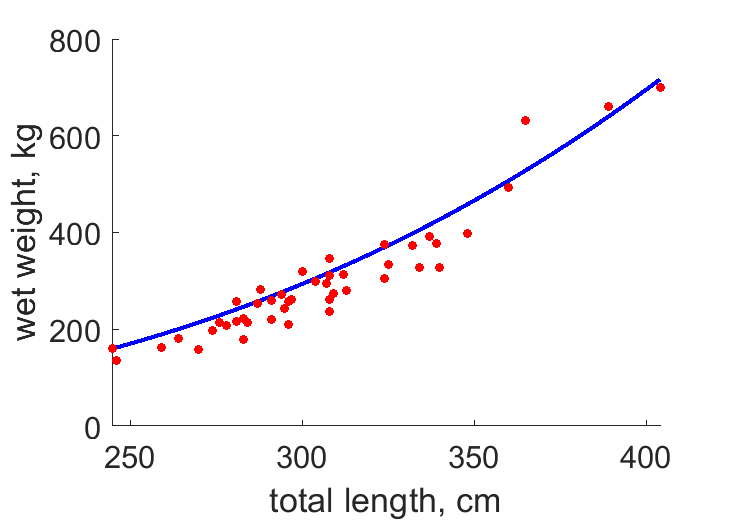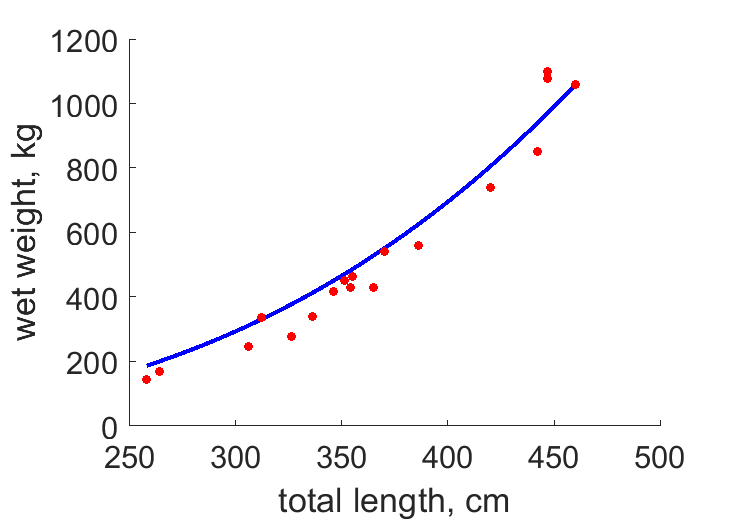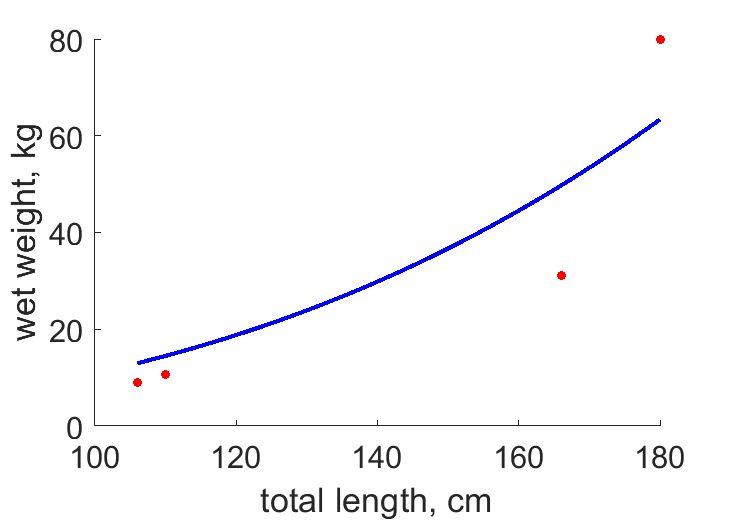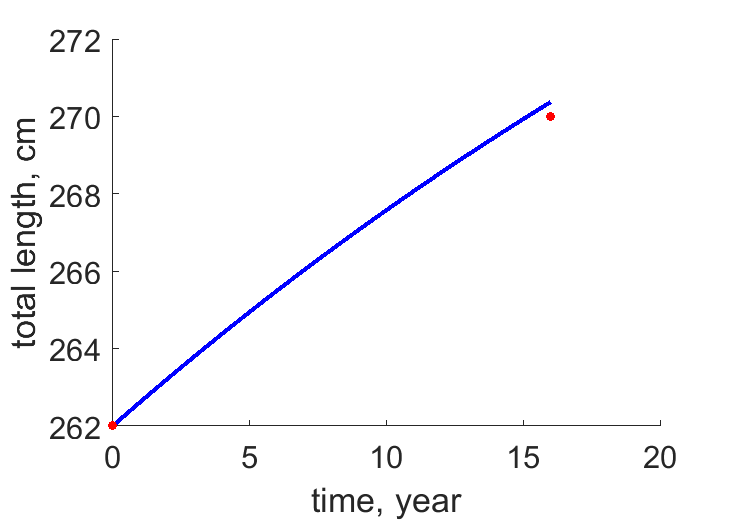Predictions & Data for this entry
| Model: stf | climate: ME | migrate: | phylum: |
| COMPLETE = 1.9 | ecozone: MN, MAN | food: biCi, biCvf, biCvb, biCvm | class: |
| MRE = 0.065 | habitat: 0iMp | gender: D | order: |
| SMSE = 0.013 | embryo: Mv | reprod: O | family: |
Zero-variate data
| Data | Observed | Predicted | (RE) | Unit | Description | Reference |
|---|---|---|---|---|---|---|
| ab | 1716 | 1729 | (0.007797) | d | age at birth | guess |
| tp | 5.694e+04 | 5.272e+04 | (0.07412) | d | time since birth at puberty | NielHede2016 |
| am | 1.431e+05 | 1.431e+05 | (0.0002232) | d | life span | NielHede2016 |
| Lb | 40 | 39.65 | (0.008779) | cm | total length at birth | MacNMcMe2012 |
| Lp | 419 | 462 | (0.1027) | cm | total length at puberty | NielHede2020 |
| Lpm | 284 | 305.9 | (0.07711) | cm | total length at puberty for males | NielHede2020 |
| Li | 550 | 526.3 | (0.04304) | cm | ultimate total length | NielHede2020 |
| Lim | 375 | 348.5 | (0.07074) | cm | ultimate total length | Niel2017 |
| Ri | 0.01096 | 0.01088 | (0.00747) | #/d | maximum reprod rate at TL 5 m | Koef1957 |
Uni- and bivariate data
| Data | Figure | Independent variable | Dependent variable | (RE) | Reference |
|---|---|---|---|---|---|
| LW |  | total length | wet weight | (0.1155) | LeclLyde2012 |
| LW2 |  | total length | wet weight | (0.1052) | NielHede2014 |
| LW3 |  | total length | wet weight | (0.3314) | NielHede2014 |
| tL |  | time | total length | (0.0006981) | MacNMcMe2012 |
Pseudo-data at Tref = 20°C
| Data | Generalised animal | Somniosus microcephalus | Unit | Description |
|---|---|---|---|---|
| v | 0.02 | 0.035 | cm/d | energy conductance |
| p_M | 18 | 15.42 | J/d.cm^3 | vol-spec som maint |
| k_J | 0.002 | 0.002 | 1/d | maturity maint rate coefficient |
| k | 0.3 | 0.6788 | - | maintenance ratio |
| kap | 0.8 | 0.7722 | - | allocation fraction to soma |
| kap_G | 0.8 | 0.7994 | - | growth efficiency |
| kap_R | 0.95 | 0.95 | - | reproduction efficiency |
Discussion
- Gestation time is unknown. The assumed litter-interval of 5 yr is the smallest for which the predicted gestation time is smaller than the litter interval (given this set of life-history data)
- Original version of this entry is discussed in AuguLika2017
- Males are assumed to differ from females by {p_Am} and E_Hp only
- mod_1: revised data for Li, Ri and temperature; male data added
- mod_1: NielHede2020 report 200-324 ova of 5.1 cm diameter per litter and suggest that they all grow into 40 cm neonates. This is, however, not possible in view of the weight difference between ovum and neonate. We expect histotrophy, combined with ovum resorption; without the latter, investment in reproduction would exceed max possible one
Facts
- Accumulates trimethylamine N-oxide in its tissues as osmoprotectants and to increase their buoyancy. Flesh is eaten in Iceland after detoxicification. (Ref: Wiki)
- Ovoviviparous (Ref: MacNMcMe2012)
- A mature female of 447 cm TL had 455 oocytes, 5 cm diameter, weighing altogher 49 kg (Ref: NielHede2014)
Bibliography